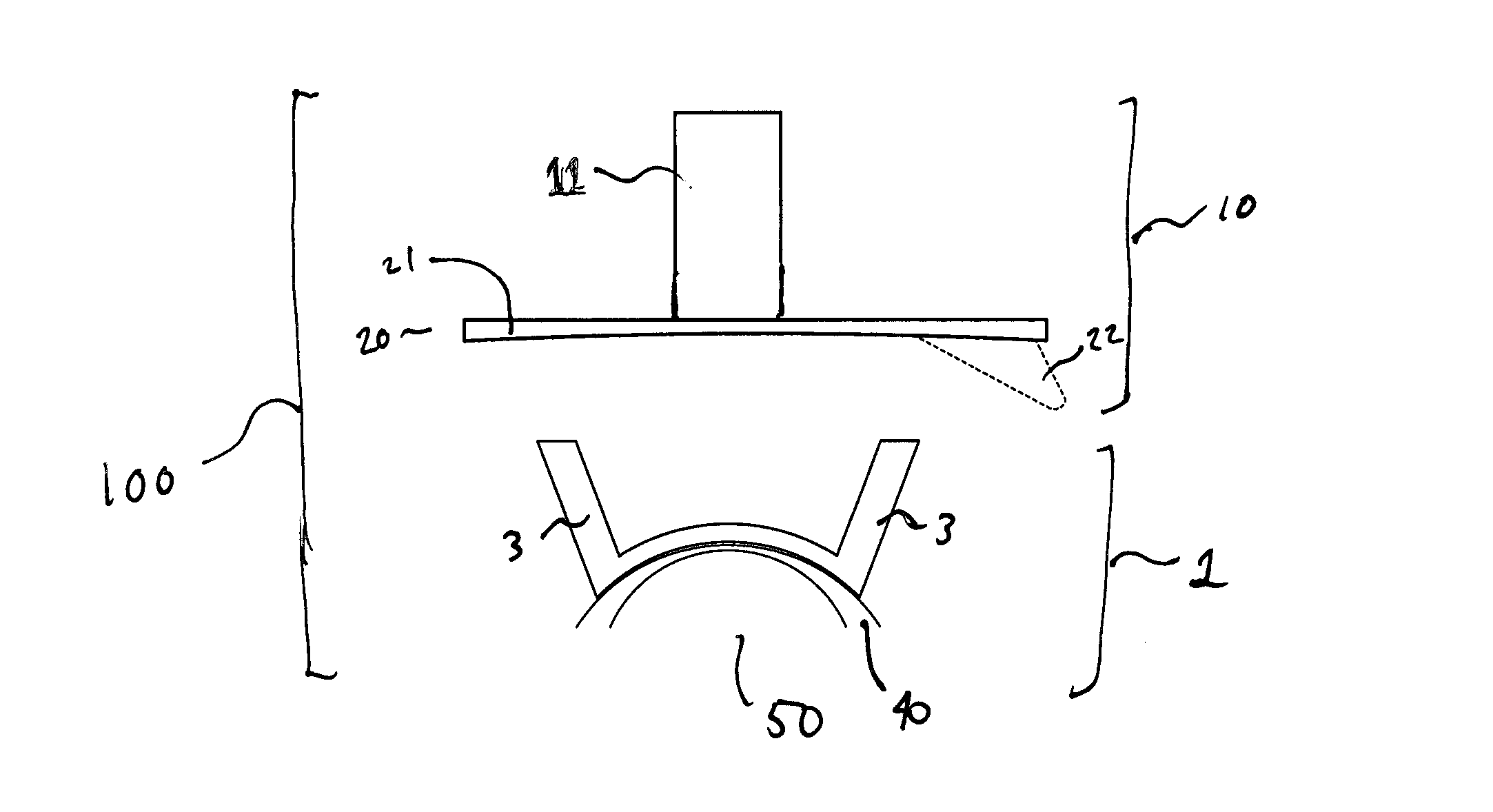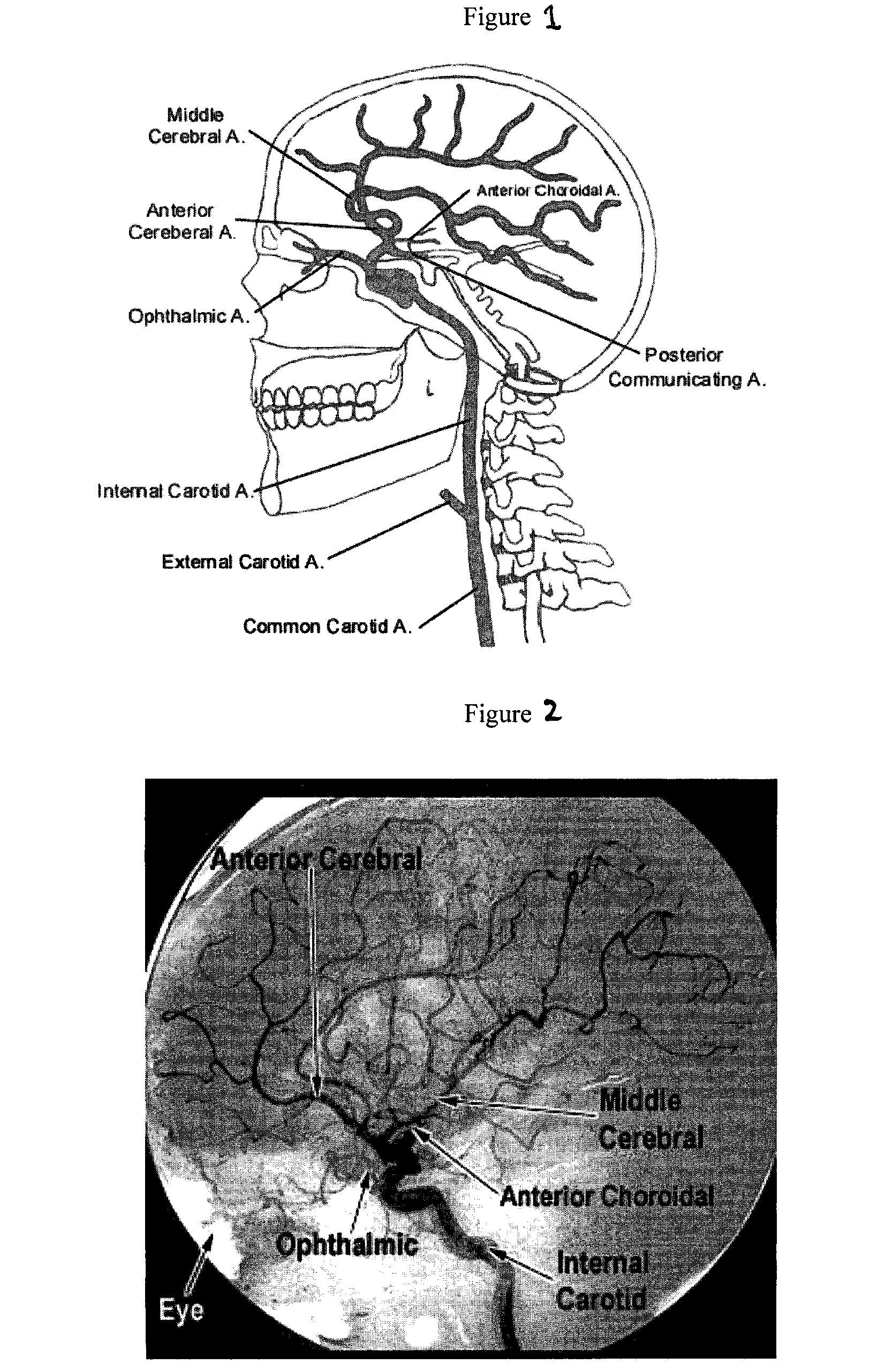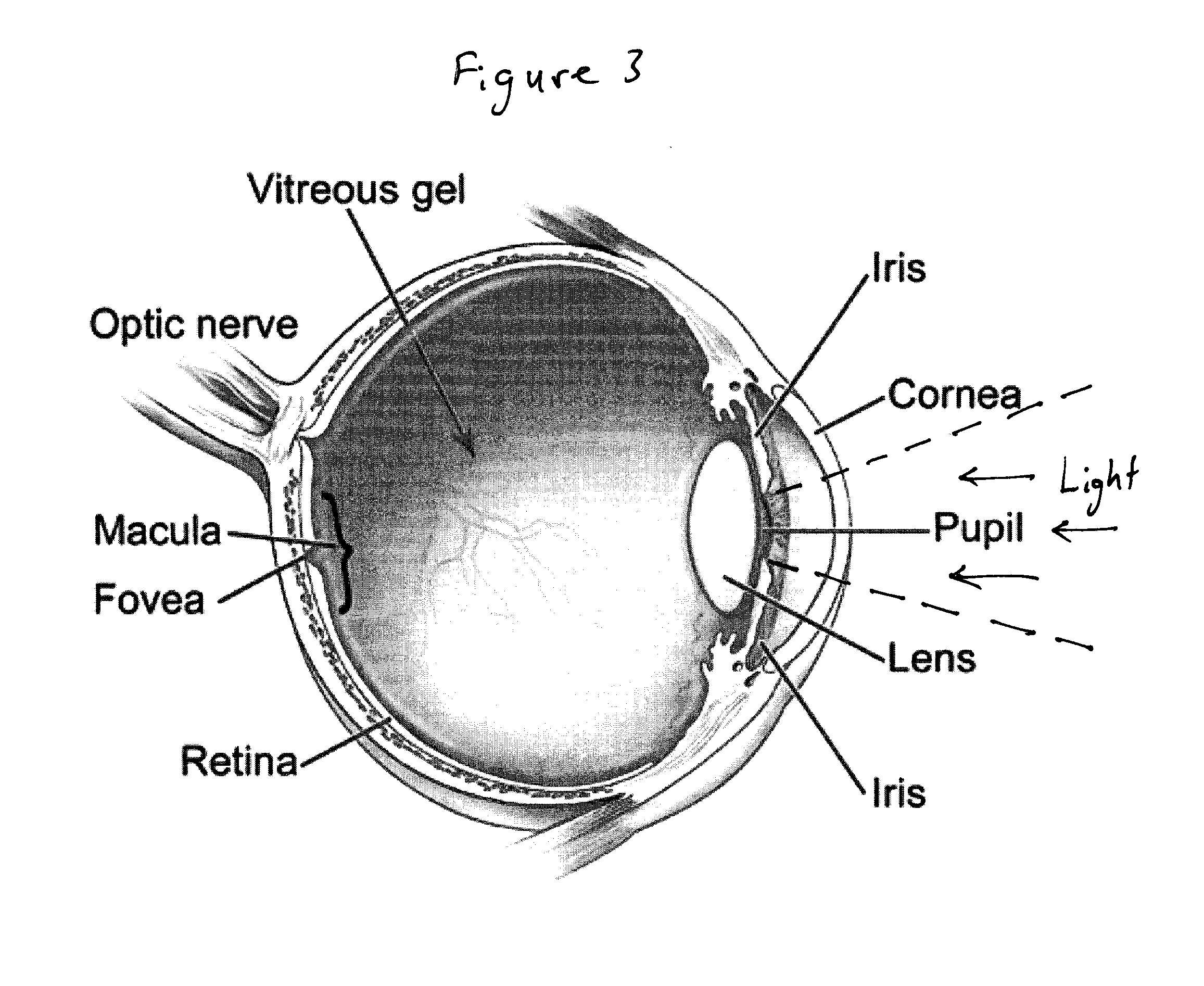Cerebral and Retinal Perfusion Monitoring Systems and Devices
a monitoring system and retinal technology, applied in the field of human patient monitoring of blood perfusion and other conditions, can solve the problems of increased mortality or prolonged disability, reduced blood flow and oxygen delivery to the brain, and increased mortality of patients, so as to reduce the risk of brain hypoperfusion and stroke, and reduce the risk of retinal artery thrombosis
- Summary
- Abstract
- Description
- Claims
- Application Information
AI Technical Summary
Benefits of technology
Problems solved by technology
Method used
Image
Examples
Embodiment Construction
[0034]This invention provides a new, patentable patient monitoring system for the operating room and intensive care units that addresses the unmet demand for continuous monitoring of a patient's cerebral and retinal blood flow. The purpose of such monitoring is to reduce the incidence of serious perioperative complications such as ischemic strokes, intraoperative visual loss, and perioperative cognitive dysfunction.
[0035]The devices of the invention are novel, non-invasive, real-time patient monitoring systems configured for routine monitoring of patients undergoing surgery, including cardiac surgery, neurosurgery, major vascular surgery, and orthopedic surgery. The inventive monitors can be used in operating rooms and surgical suites around the world. As described herein, the instant monitoring modalities employ a re-useable imaging system and single use, disposable components termed “corneal caps”. As presently envisioned, in use a new set of corneal caps will be required for each...
PUM
 Login to View More
Login to View More Abstract
Description
Claims
Application Information
 Login to View More
Login to View More - R&D
- Intellectual Property
- Life Sciences
- Materials
- Tech Scout
- Unparalleled Data Quality
- Higher Quality Content
- 60% Fewer Hallucinations
Browse by: Latest US Patents, China's latest patents, Technical Efficacy Thesaurus, Application Domain, Technology Topic, Popular Technical Reports.
© 2025 PatSnap. All rights reserved.Legal|Privacy policy|Modern Slavery Act Transparency Statement|Sitemap|About US| Contact US: help@patsnap.com



